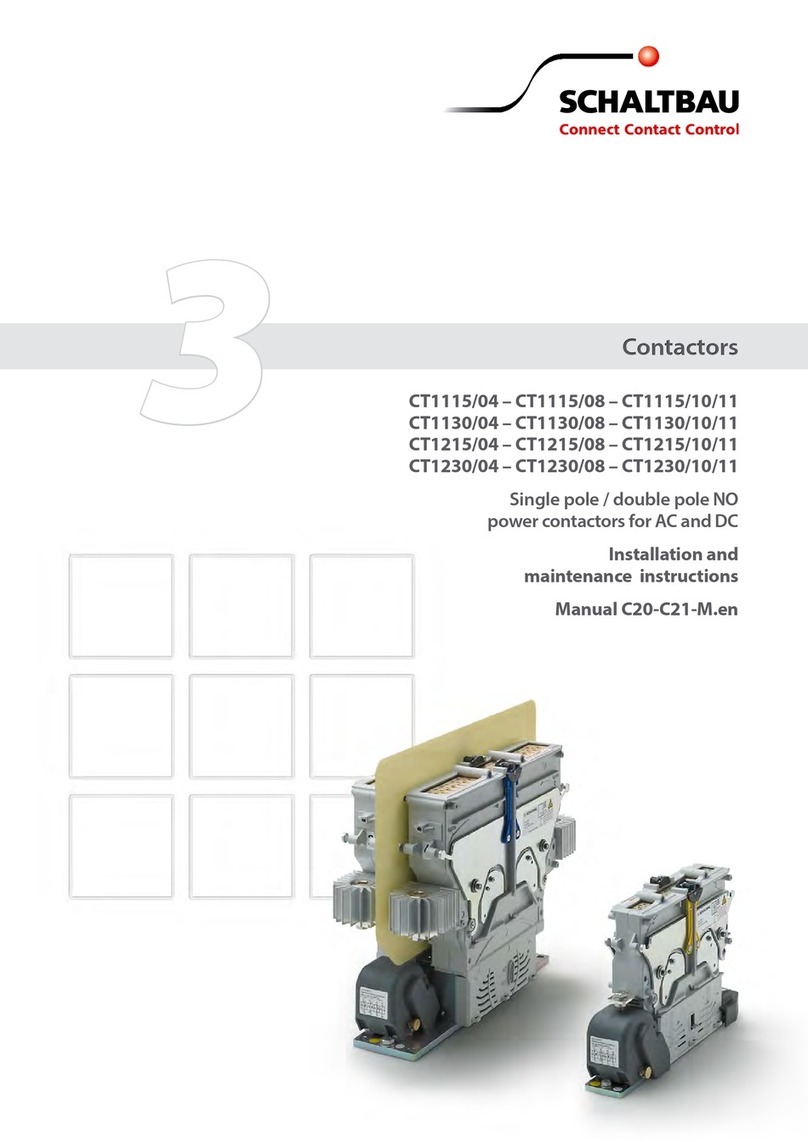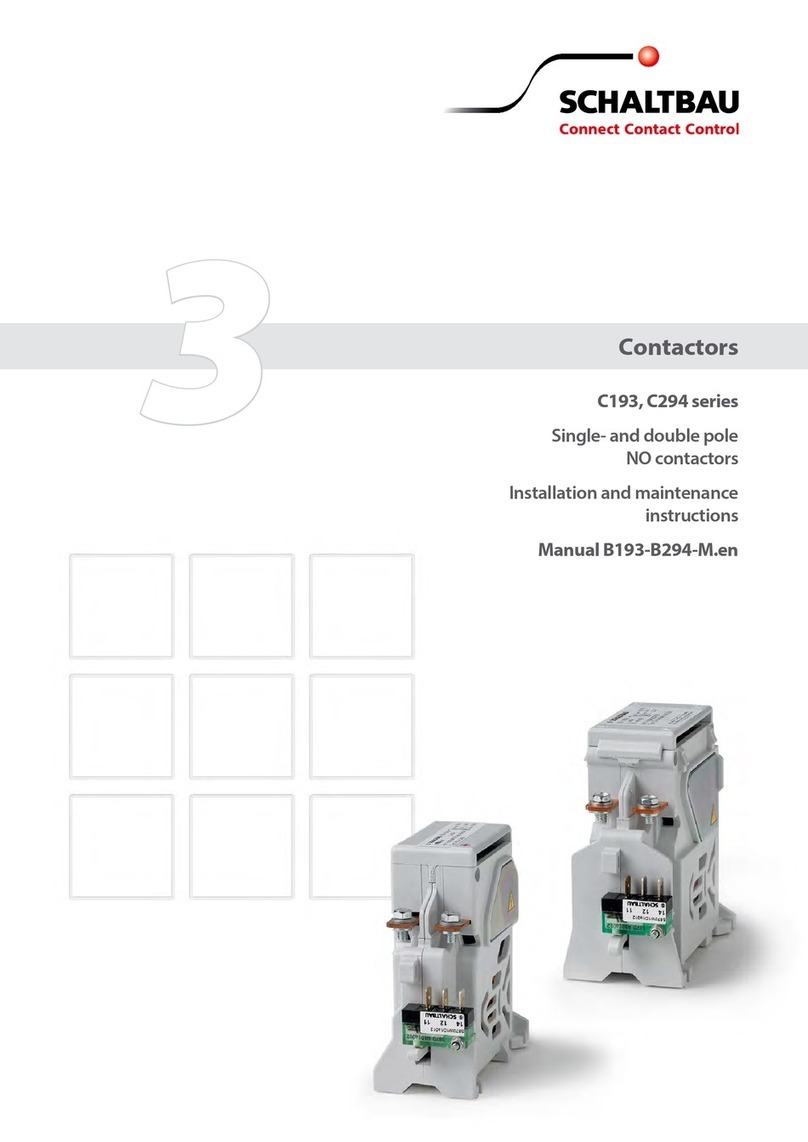
5
2020-05-13 / V1.0 Contactors C295 – Installation and Maintenance Instructions
General and security information
2.2 User obligations
X
Observe all applicable national provisions, all safe-
ty, accident prevention and environmental regula-
tions as well as the recognized technical rules for
safe and proper working.
X
Carry out regular inspections of all protection and
safety devices to see if they work properly.
X
Work on electric equipment may only be per-
formed by an expert or trained personnel working
under the direction and supervision of an expert
according to the applicable rules of electrical en-
gineering.
X
An expert is a person who can judge and recognise
the possible dangers of the jobs assigned to him
based on his training, knowledge and experience
and by knowledge of the appropriate regulations.
X
Work on the contactors must only be carried out
by sta who meets the requirements set out in this
manual.
X
Sta must be informed clearly about who is re-
sponsible for the maintenance of the contactors.
X
After each installation work and/or after any other
modications, alterations or maintenance works,
always perform complete checks according to
these standards:
-EN/IEC 60077-2
-EN/IEC 60947-4-1
2.3 Intended use
X
The contactors have been designed and tested ac-
cording to national and international standards.
Due to their unique features they can also be used
in a variety of applications.
X
The contactors must only be used under operating
conditions according to the technical specication
and the instructions in this manual.
X
None of the operating conditions dened in the
corresponding data sheets and in our catalogue
B295 in section “Specications“, such as volt-
ages, currents, ambient conditions, etc. may be
changed. The catalogue is available under:
https://www.schaltbau.com/en/media-library/
X
The contactors may only be used when all protec-
tive devices are present, have been installed prop-
erly and are fully operational.
X
The contactors must not be contaminated with
aggressive media.
X
Contactors may not be used without further pro-
tective measures in potentially explosive atmos-
pheres.
X
The contactor meets the requirements of basic in-
sulation. Make sure the frame or plate onto which
the drive of the contactor is mounted is earthed in
a shock and vibration resistant way.
X
Coil suppression for reducing surges when the coil
is switched o is optimally attuned to the contac-
tor‘s switching behaviour. The existing opening
characteristic must not be negatively inuenced
by parallel connection with an external diode.
X
The contactor has unprotected live parts
X
The required clearance of live parts to earth and
other parts of the contactor is to be observed as
well as the safety regulations of the applicable
standards.
X
Switching at maximum breaking capacity might
require larger clearance! Do not hesitate to ask our
advice for dimensioning.
X
Improper handling of the contactors, e.g. when
hitting the oor with some impact, can result in
breakage, cracks and deformation. Always handle
the contactors with care.
X
Use the contactor only according to its intended
use. Replace or repair damaged parts exclusively
with original parts. Any other usage of or tamper-
ing with the contactors is considered contrary to
its intended use. No liability is assumed for damag-
es and accidents caused due to non-compliance
with the instructions in this manual or improper
use of the contactors.
2.4 Ambient conditions
NOTICE
The contactors are constructed for specic ambient
conditions.
X
Operate the contactors only according to the
ambient conditions, like temperature ranges,
pollution degree, etc., as dened in the cor-
responding data sheets and in our catalogue
B295. The catalogue is available under:
https://www.schaltbau.com/en/media-library/






























